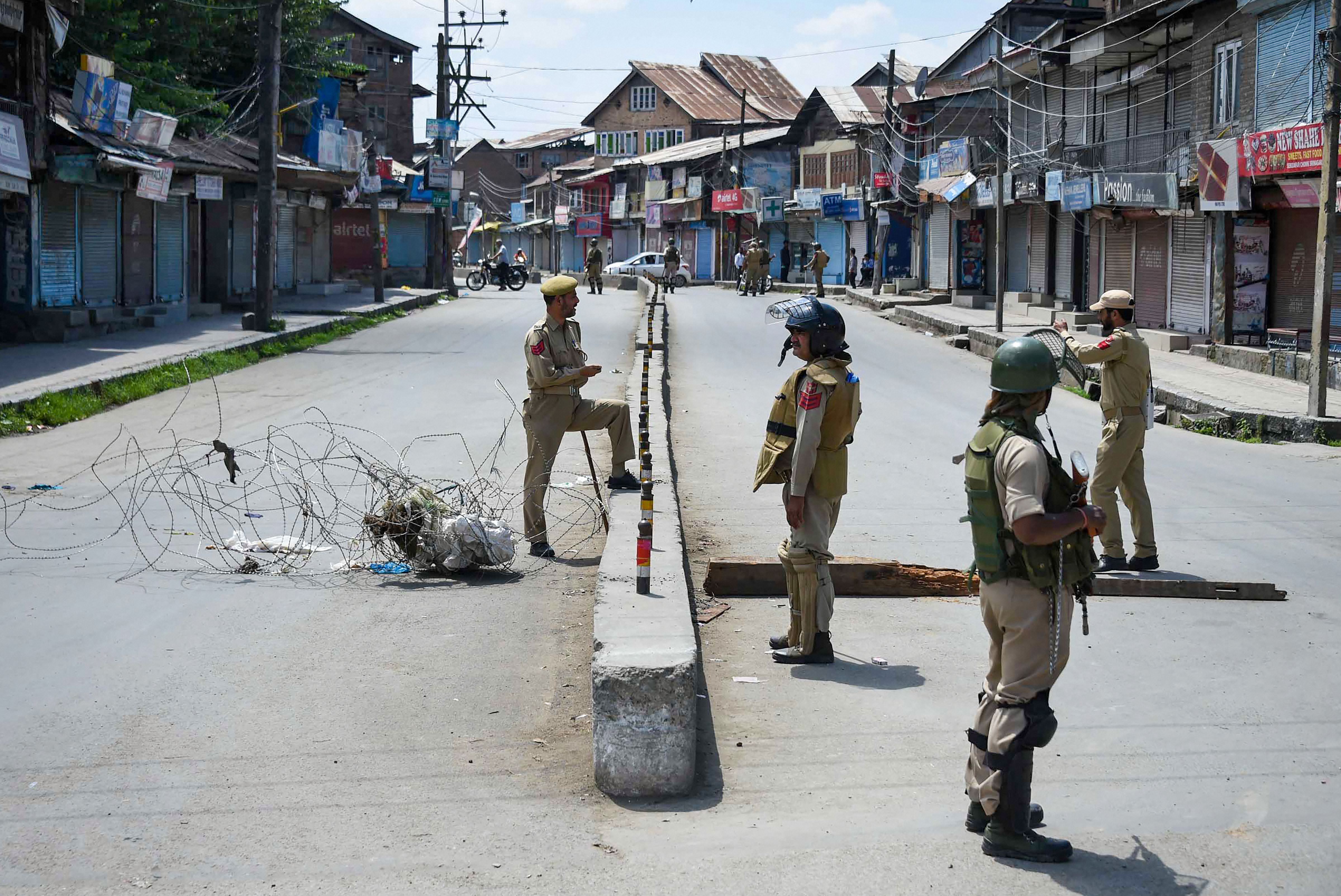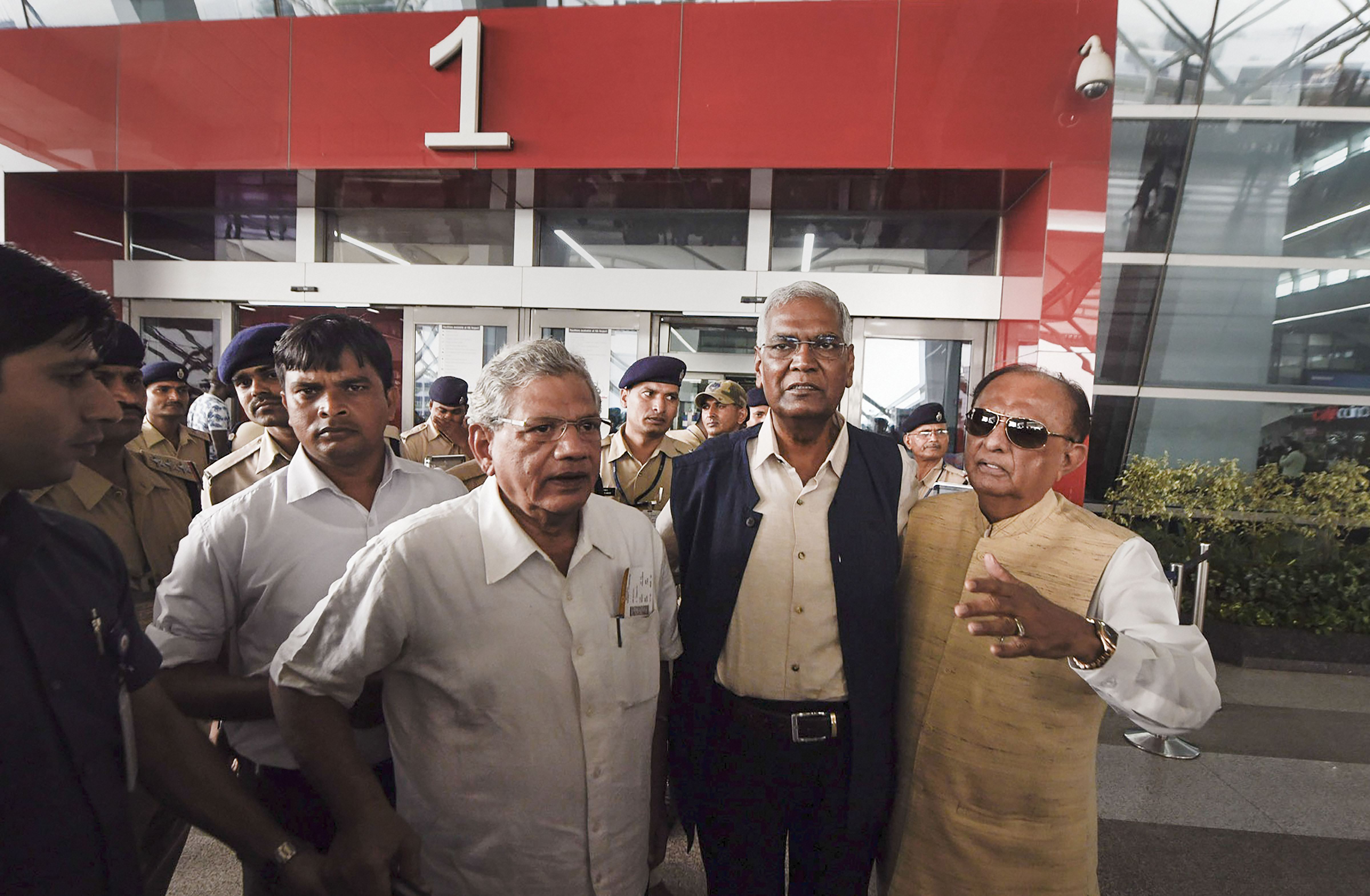
When will Kashmiris see a normal, peaceful day again?
Apparently, people themselves are refusing to come out in protest despite lifting of restrictions in Jammu and Kashmir, though it is not clear whether there is an organised effort behind the self-imposed boycott.

It is almost a month since Kashmir went into a government-imposed lockdown on August 5. With Internet down, mobile communications non-existent and landline connections patchy, news is barely trickling out of the beleaguered Valley.
On Monday, September 2, Principal Secretary Rohit Kansal said 90 percent of daytime restrictions had been lifted. Some 26,000 landlines were functioning, he said.
Yet, anecdotally, journalists from outside Kashmir say they are finding it difficult to get through to people within the state. Reports quoting journalists in the Valley said they were finding it difficult to access telephones and the Internet. In addition, some have accused the security forces of deleting footage in their cameras and making it difficult to pass through each checkpoint.
Apparently, people themselves are refusing to come out in protest despite lifting of restrictions. Though it is not clear whether there is an organised effort behind the self-imposed boycott, in effect it appears as if the Valley is all but shut.
The government steered by Prime Minister Narendra Modi and his aide Home Minister Amit Shah “sanitised” Kashmir a couple of days before August 5 in preparation for the scrapping of special status to Jammu and Kashmir state on that day. The state has also been demoted to the status of a Union territory with Ladakh split from J&K, to take effect from October 31.
Expecting massive protests to its decision to scrap special status under Article 370 of the Constitution, the government in an unprecedented move arrested all political leaders in Kashmir, including former chief ministers Omar Abdullah and Mehbooba Mufti, the latter a partner until recently in a coalition government with the BJP.

It seems, for all practical purposes, the lockdown continues in subtler forms. It required the mighty Supreme Court’s intervention for CPI(M) general secretary Sitaram Yechury to meet his colleague, four-time MLA Yusuf Tarigami, in incarceration. If one could attribute that to Yechury being a politician, how about a Kashmiri student Mohammed Aleem Sayeed who too had to get the apex court to intervene to meet his parents — something that indicates the super-tight net cast over the state.
Leading politicians from opposition parties, including Rahul Gandhi, Ghulam Nabi Azad and Dinesh Trivedi were stopped at the airport by security forces and officials in Kashmir and turned back to Delhi.
Foreign Minister S Jaishankar recently said that security restrictions will progressively be lifted. That may be a positive assurance but the point is what purposes does Kashmir’s shutdown serve? J&K police chief Dilbag Singh and other officials have pointed out there has been no violence in Kashmir since the removal of the state’s autonomy. With an increased strength of the military and paramilitary forces who are manning the Valley, there is obviously little space even for peaceful protest.
Despite the attempts to forcibly bottle any signs of opposition, reports speak of sporadic stone-throwing and protests from across Kashmir. So, for a concerned non-Kashmiri outside the state, the question is whether the government calculates that the people will eventually swallow the removal of autonomy and demotion of the state to get on with their lives as if nothing happened?
Also read: Omar’s sister meets him; govt allows kin to visit detained leaders in J&K
Paradoxically, the government’s contention that the removal of special status has integrated Kashmir with the rest of the country comes at a time when the lockdown has ensured that it is far from being integrated. For, what is the meaning of integration? It obviously means free movement to and from the state, that the internal situation within Kashmir is as free as it is anywhere else, like say in Maharashtra, Gujarat or Karnataka. The situation today is diametrically the opposite.
By imposing a lockdown and arresting politicians like the Abdullahs and Mehbooba Mufti, the government willy-nilly neutralised a layer of proven pro-India politicians who swore by the Indian Constitution, fought elections, governed the state in alliance with national political parties like the Congress and more recently the BJP.
All it requires is logical thinking to visualise the state of mind of this pro-India section now under arrest. Reports say that Abdullah seems highly agitated and so is Mehbooba Mufti. Soon after the removal of special status, former chief minister Farooq Abdullah managed to talk to the media and expressed anguish at the developments, became emotional and said he felt betrayed by the government’s move. Soon, he was back under arrest, this time with tighter security. Clearly, the elder Abdullah had let out the feelings of the pro-India sections in the Valley.
Also read: Kashmir ‘fully integrated’ with India even before Article 370 was dumped
In fact, for all these 72 years, ever since the dispute over the accession of Kashmir began, what had boosted India’s hold over the state and helped it defend any criticism by pro-Pakistan sections and Islamabad was the special status to the state, and secondly, that the state government was mostly elected through free and fair elections and ruled by the local people.
In conjunction with the secular nature of the Indian Constitution and the near-uninterrupted reign of democratic rule in the country, there was always a chance that the Kashmiri people could be won over and that more and more would back India rather than go with Pakistan or even want an independent country.
Over the years, the level of comfort of Kashmiris was also visible as thousands of them travelled to the rest of the country, to various states re-rooting themselves either in business, education, corporate employment or the bureaucracy. That was real integration and was happening gradually in an organic manner — until August 5, when the process was rudely interrupted.
Using questionable means, which are now being challenged in the Supreme Court, the Modi government managed to strike off special status to the state. But what next? If the government was so clear that removal of special status would bring in development, integration and win the support of Kashmiris, what was the need to subject the people to such intensified security measures?
More importantly, how does the government plan to ease the bottled up pressure that must have built up in the last one month without ensuring there is no blow up? A recent report that the government plans to generate 50,000 jobs in J&K may be an attempt to assuage the people that all is not lost. But is that enough?
For a government that sprung demonetisation on an unsuspecting population, mismanaged the implementation of the GST and the NRC, and has presided over an economic downturn, the track record of its performance gives little scope for hope that Kashmir will return any time soon to its pre-August 5 situation.


